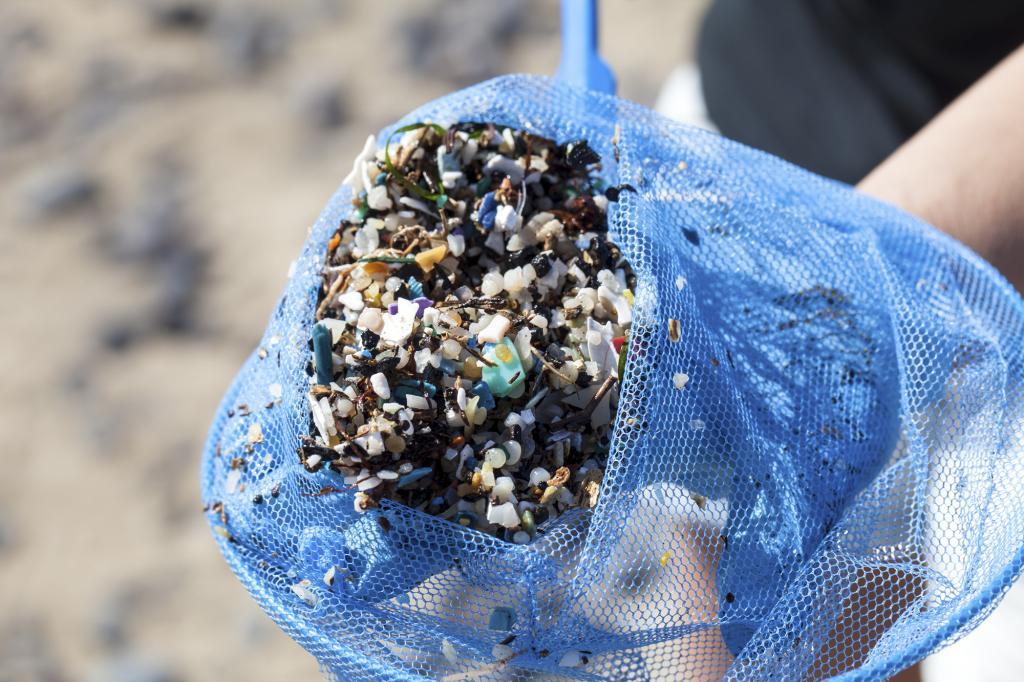More and more research points to the omnipresence of microplastics, those small particles that are concerning due to their potential impact on health and the environment.
Adding to this list of studies is a Spanish research that has identified the presence of microplastics in human reproductive fluids. The findings of this study were presented at the Congress of the European Society of Human Reproduction held in Paris this week.
The study, led by Emilio Gómez-Sánchez, a specialist at Next Fertility Murcia, examined semen samples from 22 males and follicular fluid from 29 females.
The analysis identified the presence of common polymers, such as polytetrafluoroethylene (PTFE, better known by its commercial name, Teflon), polystyrene (PS), polyethylene terephthalate (PET), polyamide (PA), polypropylene (PP), and polyurethane (PU) in both male and female samples.
Specifically, researchers found microplastics in 69% of the analyzed follicular fluid samples. The most frequently detected polymer in women was PTFE, identified in 31% of the samples. This was followed by polypropylene, found in 28% of the analyses; PET, present in 17%; and polyamide, detected in 14%.
In the case of males, microplastics were found in 55% of the analyzed semen samples. In this group as well, PTFE was the most common polymer, present in 41% of the samples. Polystyrene was identified in 14% of the samples, PET in 9%, and PA and PU in 5%.
To prevent any contamination, all samples were collected and stored in glass containers and underwent chemical treatment before analysis. The analysis was able to detect microplastics up to 20 microns in size.
"There are microplastics so small that they can be ingested by a bacterium"
Microplastics from ultra-processed food accumulate in the brain and increase cases of depression, dementia, and other mental health disorders
"We decided to look for microplastics in reproductive fluids after seeing their presence in different types of tissues and organs," explains Sánchez-Gómez, who was not surprised to discover their presence in the analysis, although he was shocked by the high percentages detected.
Nevertheless, the specialist is cautious about the possible effects of this common presence of microplastics.
"We still do not know their impact. Studies with animals that have ingested these compounds have shown that microplastics can induce inflammatory and oxidative processes, among other effects," says Sánchez Gómez. "It is possible that they may affect the quality of eggs or sperm, but there is still not enough evidence to confirm it," he emphasizes.
Additionally, the specialist highlights that fertility is influenced by a large number of factors, such as age, genetics, or overall health status, so if confirmed, the influence of microplastics would not be absolutely decisive. "My message is not to be alarmed. The fertility issue does not depend solely on microplastics. It is a multifactorial problem in which, in any case, this factor would only be one more part of the equation."
The specialist is already working on a more ambitious study that will include a larger number of samples from different locations and will also investigate the sources of exposure to microplastics.
According to Rita Vassena, co-founder and CEO of Fecundis, a company developing assisted reproduction treatments, and former scientific director of the Eugin Group, "this study presents very interesting results, although unfortunately not unexpected for scientists. In summary, microplastics have been found in both follicular fluid and seminal plasma, that is, in the reproductive organs of both females and males. These findings have been observed in a high proportion of the subjects analyzed," she stated in comments to SMC Spain.
"It should be noted that this is a preliminary study, as the authors rightly point out, due to the small sample size, but also due to the lack of complementary analyses such as an exploration of the association between the presence of microplastics and inflammation markers in the reproductive organs, or an association with the subjects' level of exposure to microplastics in their environment. However, the main conclusions of the study, that a high proportion of men and women have microplastics in their reproductive organs, are in line with results from other research, reinforcing them," she added.
